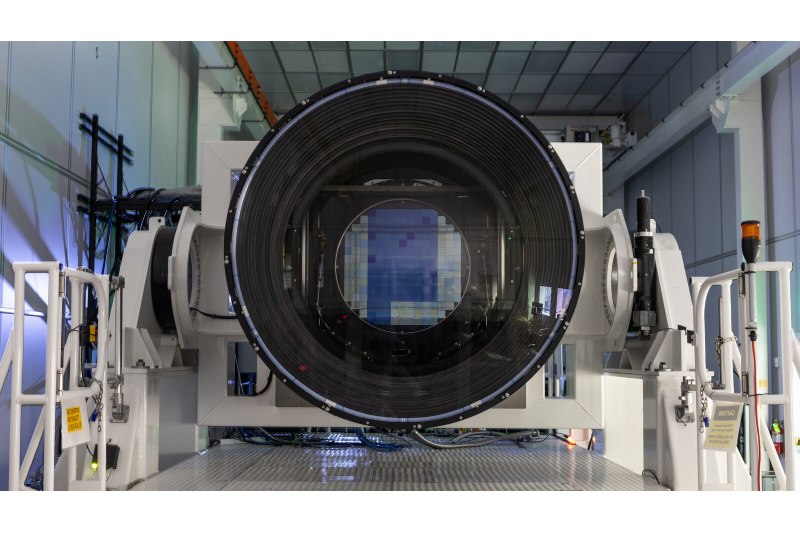The Largest Digital Camera for Astronomy in the World is Now Operational

The camera for the future Vera Rubin Observatory is now complete and ready to search the night sky for signs of dark matter, detect near-Earth asteroids, and much more. With an astounding 3,200 megapixels, this is the largest digital camera for astronomy in the world and it will be installed at the Chilean Rubin Observatory.
The camera is large, with a mass of approximately 3 metric tons, which is comparable to that of a small automobile. Its massive 5-foot-diameter front lens will enable it to capture remarkably detailed photos of vast swaths of the sky. Constructed at the SLAC National Accelerator Laboratory (SLAC) of the Department of Energy, it is intended to be utilized for the Legacy Survey of Space and Time (LSST), a ten-year endeavor aimed at imaging the southern sky and identifying transitory objects such as supernovae.
“With the completion of the unique LSST Camera at SLAC and its imminent integration with the rest of Rubin Observatory systems in Chile, we will soon start producing the greatest movie of all time and the most informative map of the night sky ever assembled,” said Director of Rubin Observatory Construction, Željko Ivezić of the University of Washington, in the statement.
The camera’s enormous size gives it incredible capability; it can resolve extremely fine detail and capture a very wide field of view, which allows it to observe a significant section of the sky at a time.
“Its images are so detailed that it could resolve a golf ball from around 25 kilometers (15 miles) away while covering a swath of the sky seven times wider than the full Moon. These images, with billions of stars and galaxies, will help unlock the secrets of the Universe,” said SLAC professor and Rubin Observatory Deputy Director and Camera Program Lead Aaron Roodman.
After testing at SLAC, the camera is now prepared for shipment to Chile, where it will be mounted atop the Simonyi Survey Telescope later in the year. The position of this telescope, which is a component of the Rubin Observatory, at the summit of the Cerro Pachón mountain presents certain installation issues.
In order to gather information regarding the motions of far-off galaxies and other important astronomical subjects, Rubin is scheduled to launch its survey in 2025.
“More than ever before, expanding our understanding of fundamental physics requires looking farther out into the universe,” said Kathy Turner, program manager for the DOE’s Cosmic Frontier Program. “With the LSST Camera at its core, Rubin Observatory will delve deeper than ever before into the cosmos and help answer some of the hardest, most important questions in physics today.”